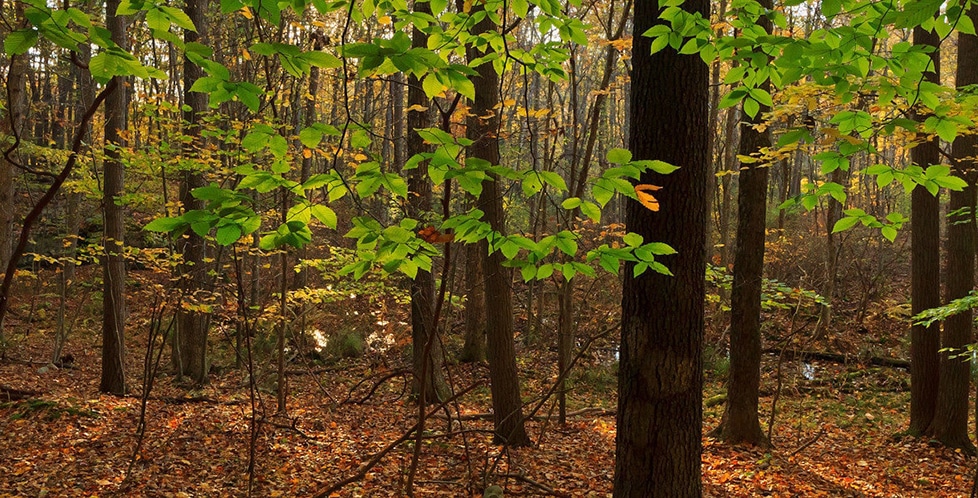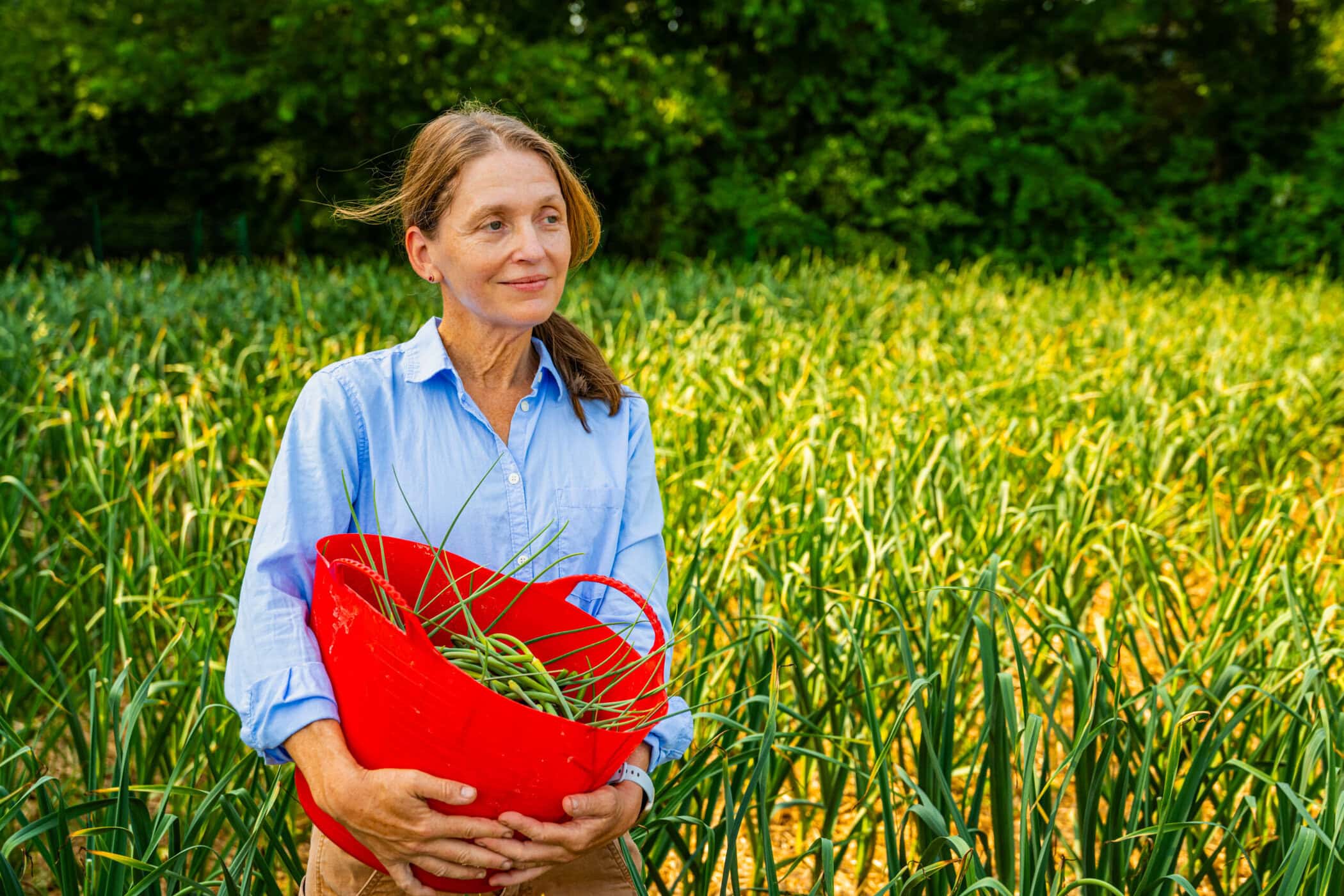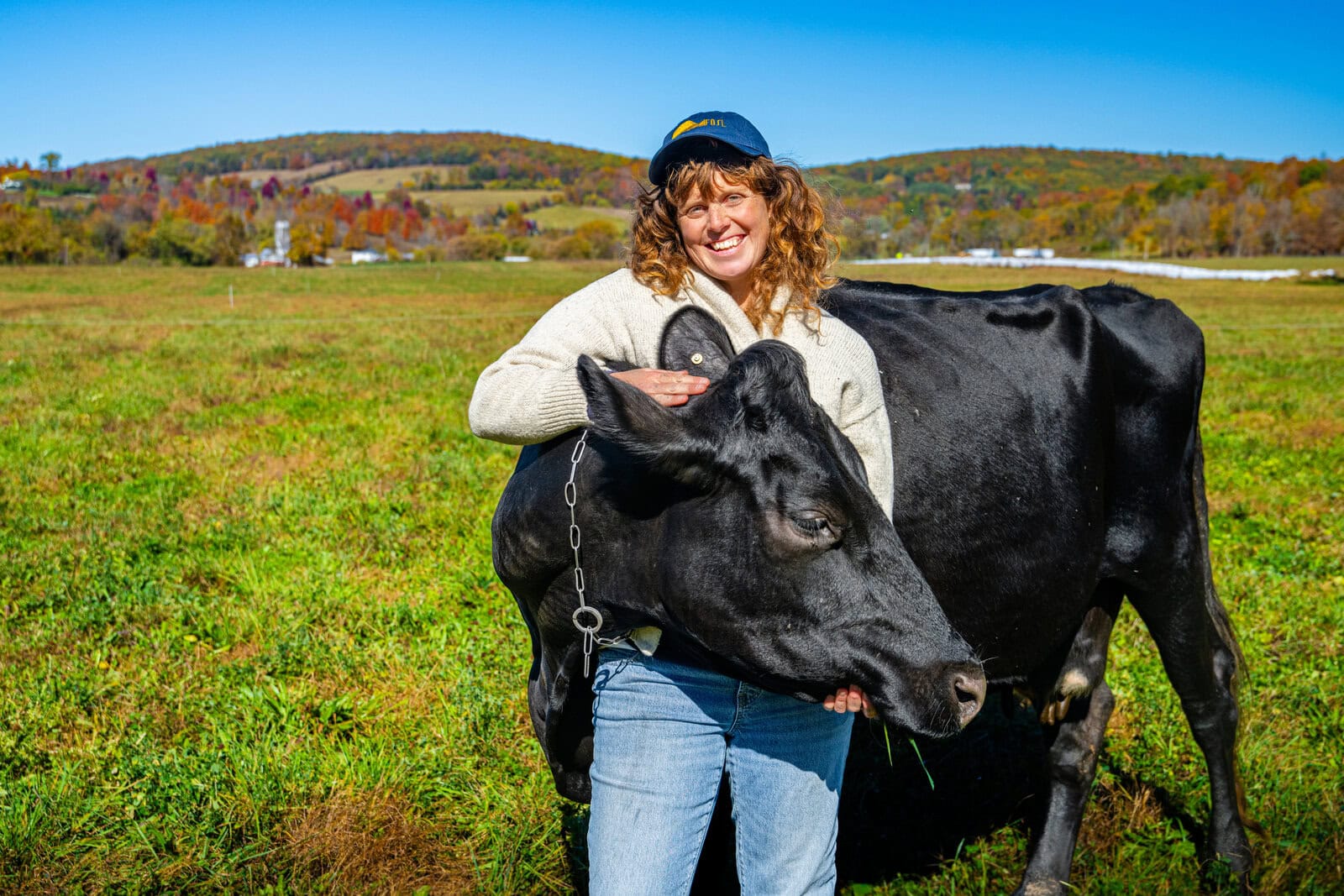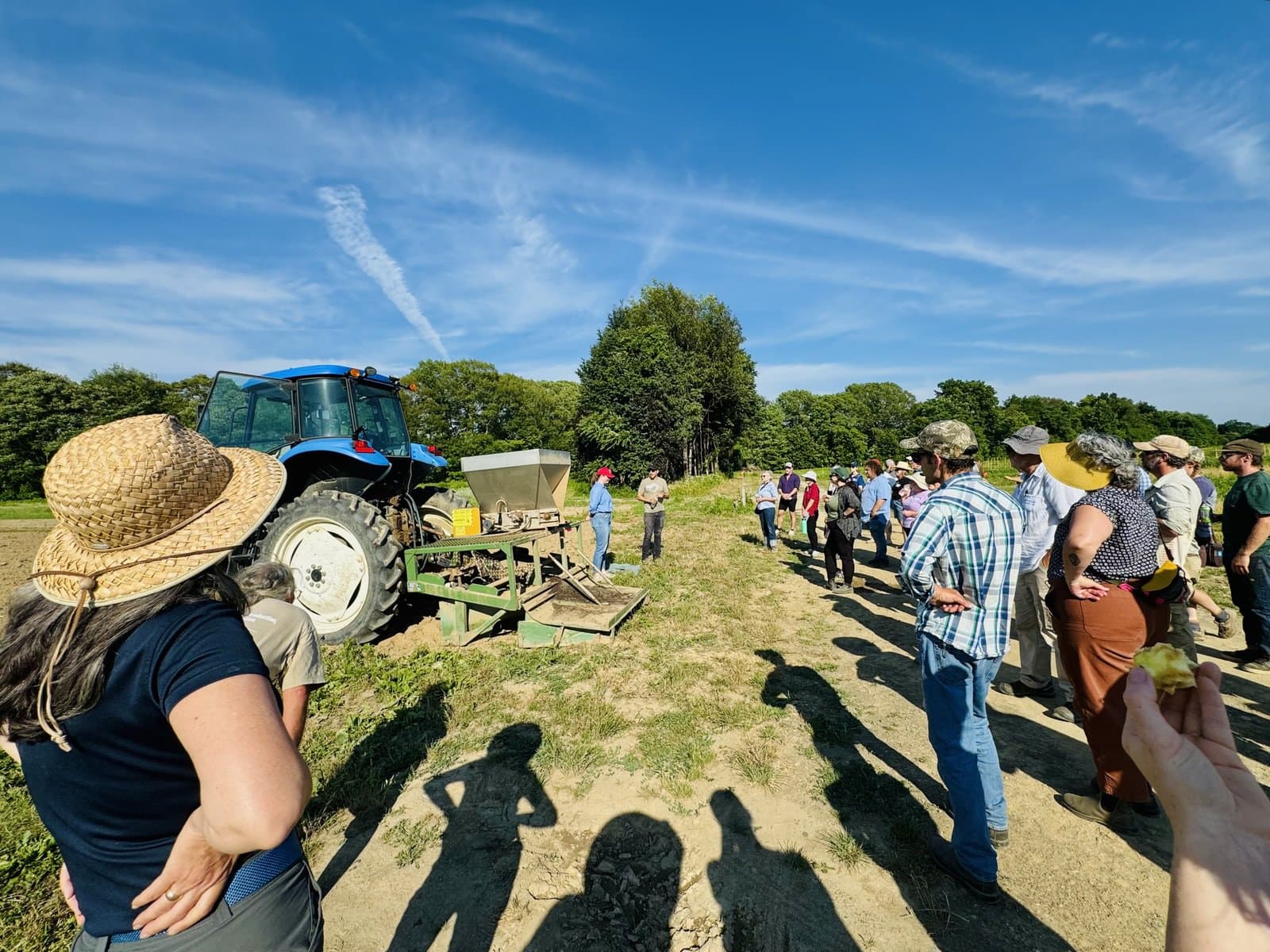When Europeans first stepped onto the Northeastern shores of what is now known as North America, the enormity of the blue ocean behind them was matched by the wooded green frontier that expanded before them. But as the colonial population grew over time, the settlers’ use of land and forest caused declines in timber, animals, clean water, fuel, flood protection, and other resources.
We now better understand the many benefits forests provide, even for those who never visit one. They are critical for protecting the quality of our drinking water, and minimizing flood and heat damage that are on the rise due to climate change, not to mention pulling carbon dioxide from the atmosphere to improve air quality and slow climate change. They also provide homes for the diverse plants and animals that call our region home. And more and more, scientists are showing the benefits to human health of enjoying, or even just looking at, forests.
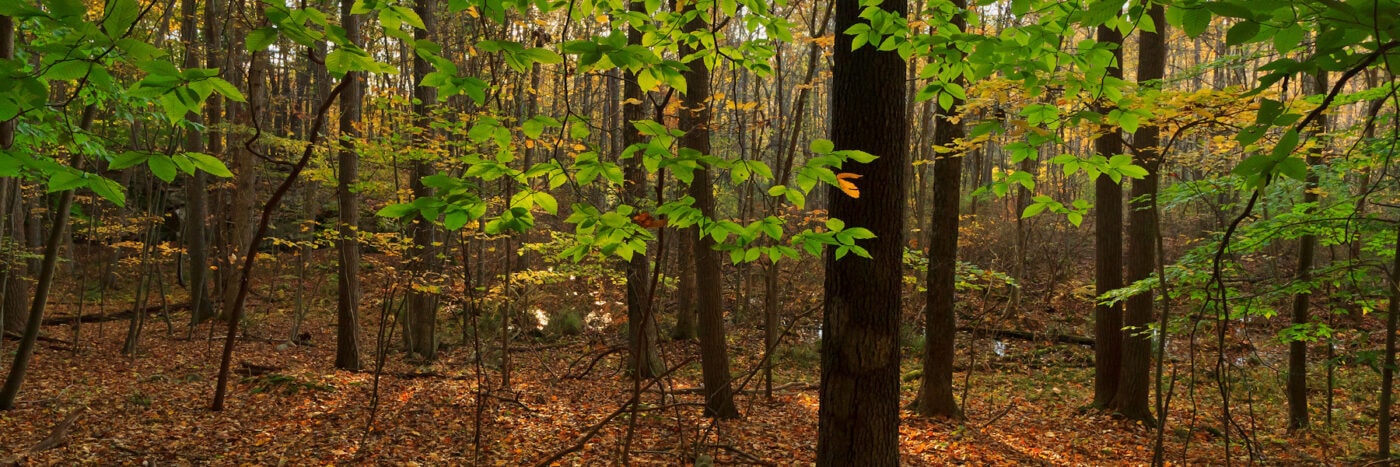
The Best Time to Plant a Tree
New York’s Franklin Hough, known as the ‘Father of American Forestry,’ brought wide attention to the disappearing forests with his 1877 Report on Forestry and his service as the first chief of the U.S. Division of Forestry (predecessor of the U.S. Forest Service). Forest protections for the Catskills and Adirondacks were then written into the New York State constitution through the 1885 “Forever Wild” laws along with other pioneering conservation and restoration efforts in New York State.
Those protections, and a century or two, allowed the regrowth of many areas that were once cleared by early settlers. Because of that, forests in the Hudson Valley and Catskills are in a much better place today than they were at the time of massive deforestation, says Charles Canham. Canham is a senior scientist with the Cary Institute, where he has studied forest ecology in the region for nearly 40 years.
“The seven-county region from Westchester up through Rockland, Sullivan, and Ulster is 61% forested as of 2020,” he says, noting that this might be approaching its limit given present-day urbanization. “Dutchess County was probably only about 15% forested 100 years ago. So, there’s been this enormous rebound. In many ways it’s one of the great conservation success stories of the 20th century.”
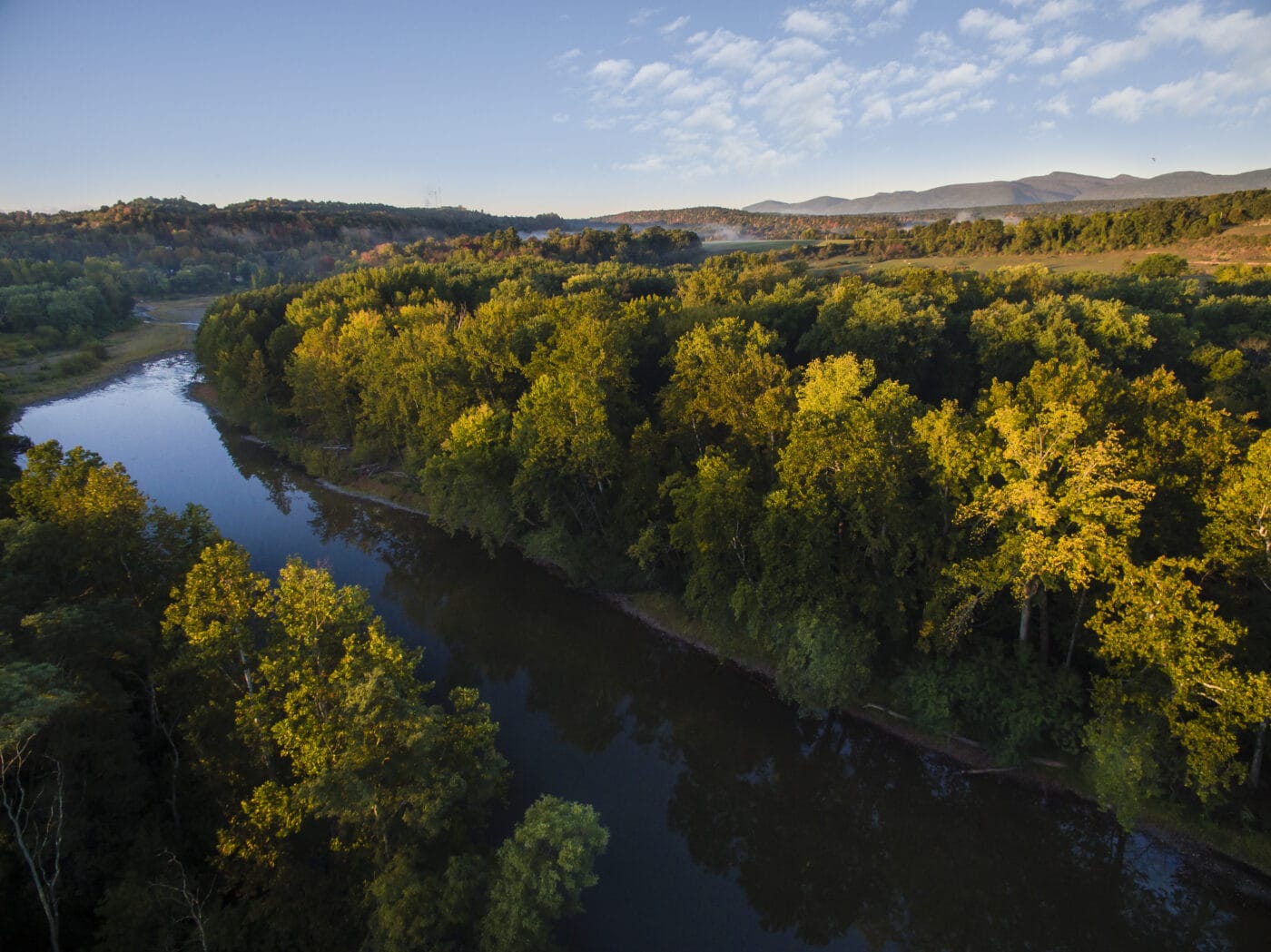
The Novelty of Today’s Hudson Valley Forests
Although trees have reclaimed much of the Hudson Valley and Catskills in recent history, the reforested areas of today are likely different than they were before, and different than other old-growth forests in the region. A key factor, Canham says, is whether the land was previously cleared for logging, or for agriculture.
Regrowth in previously logged areas often reverts to something similar to its former state over time. But this is not usually the case in reforested areas that were once used for farming and agriculture. “What’s missing from these post-agricultural forests is the understory,” Canham says. “These post-agricultural forests have their trees back, but they do not have their native herb and shrub layer. Most of the things in the understory are non-native.”
A few of those non-native species are considered invasive — they tend to grow so fast and so densely that native tree seedlings can’t get any sunlight, and don’t have a chance to grow into trees. Once the mature trees that currently make up the canopy die and fall, some areas will become brushy thickets of a single species instead of diverse forests.
In terms of wildlife, non-native vegetation in the understory might have a mixed impact, says Kara Belinsky, a biology professor at SUNY New Paltz who studies the effects of urbanization on birds and other wildlife. “For birds, there is some research that shows that certainly invasive undergrowth is better than none [although not better than native],” Belinsky says. “Some birds are able to use these bushes at least as nesting resources, although they probably don’t provide as much food.” The insects that some birds feed on (and most feed their young on) are probably most impacted by a lack of non-native vegetation in the understory.
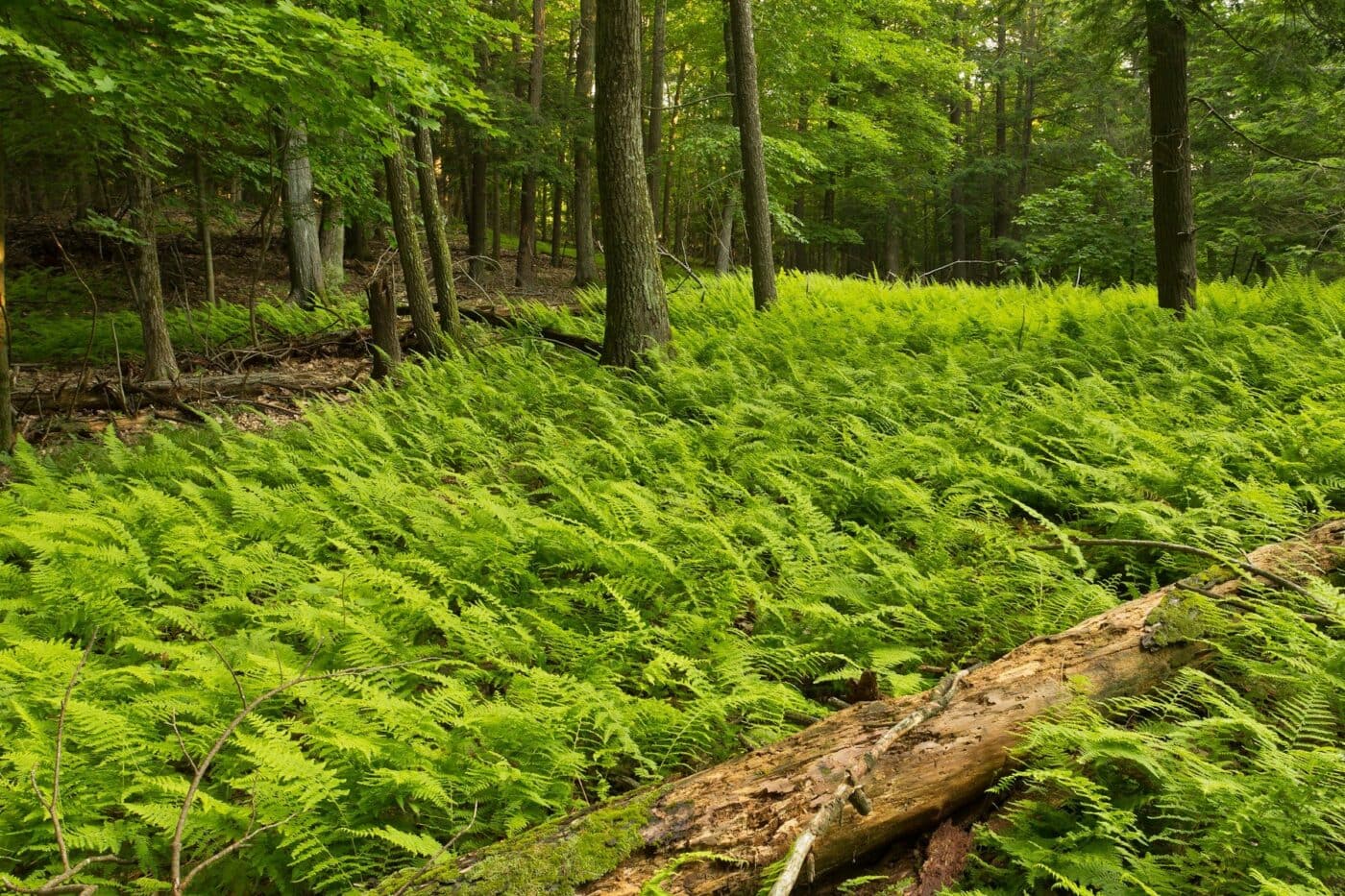
Considering that about 30% of today’s plant species in New York are non-native, it seems inevitable that such plants will continue to thrive in some of the Hudson Valley’s forests going forward. Canham notes that forests have always existed in a state of ecological flux. “If you look at the pollen record of the Northeast, there’s no stability anywhere in the 12,000 years of post-glacial history.” This concept of a thriving but ever-changing forest is at the core of his recent acclaimed book, Forests Adrift.
With this perspective, Canham holds some guarded optimism for the future of forests in the region. “When I go into the woods I’m sort of like Chicken Little and Pollyanna at the same time.” he says. “I think these forests are unbelievably resilient, particularly in response to climate change.” And unlike forests out West that are threatened by forest fires, forests in the Northeast are still a major source of carbon sequestration, which keeps carbon dioxide out of the atmosphere and mitigates climate change. “Half the forest land in the country is in the eastern 31 states, but it accounts for 85% of the nation’s forest carbon sequestration,” Canham explains.
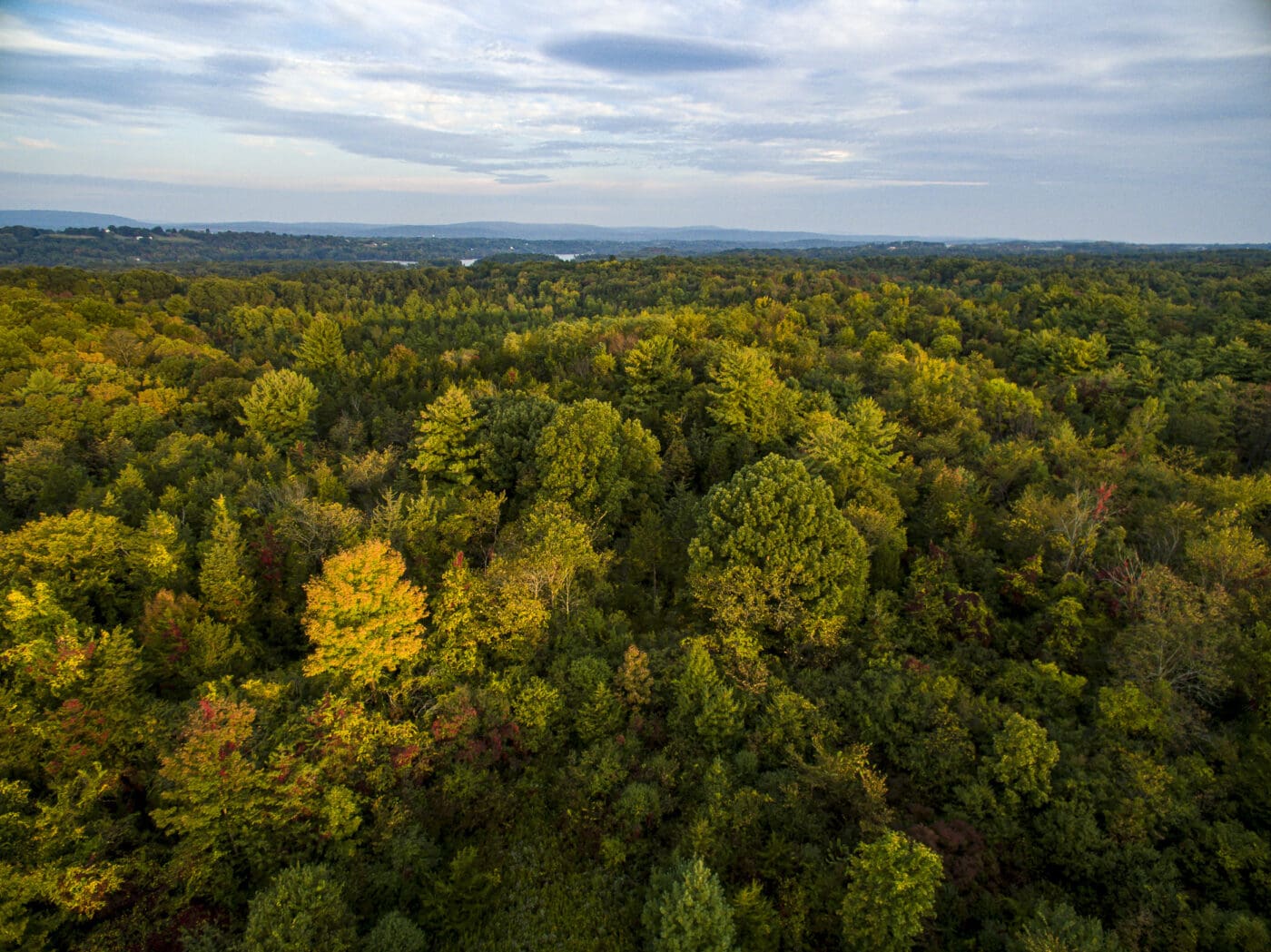
But forests in the Hudson Valley and Eastern states are not immune to other creeping threats that have researchers like Canham and Belinsky concerned.
Forest Plagues of the 21st Century
The New York Department of Environmental Conservation lists 7 types of insects and 2 diseases that are of significant concern for trees in New York. Of these, only 3 were known to exist in the state prior to the turn of the 21st century. In other words, these plagues are on the rise.
Specific kinds of trees are targeted by some of these pests, like the emerald ash borer and the hemlock wooly adelgid. And this is quickly changing the composition of some forests in the region.
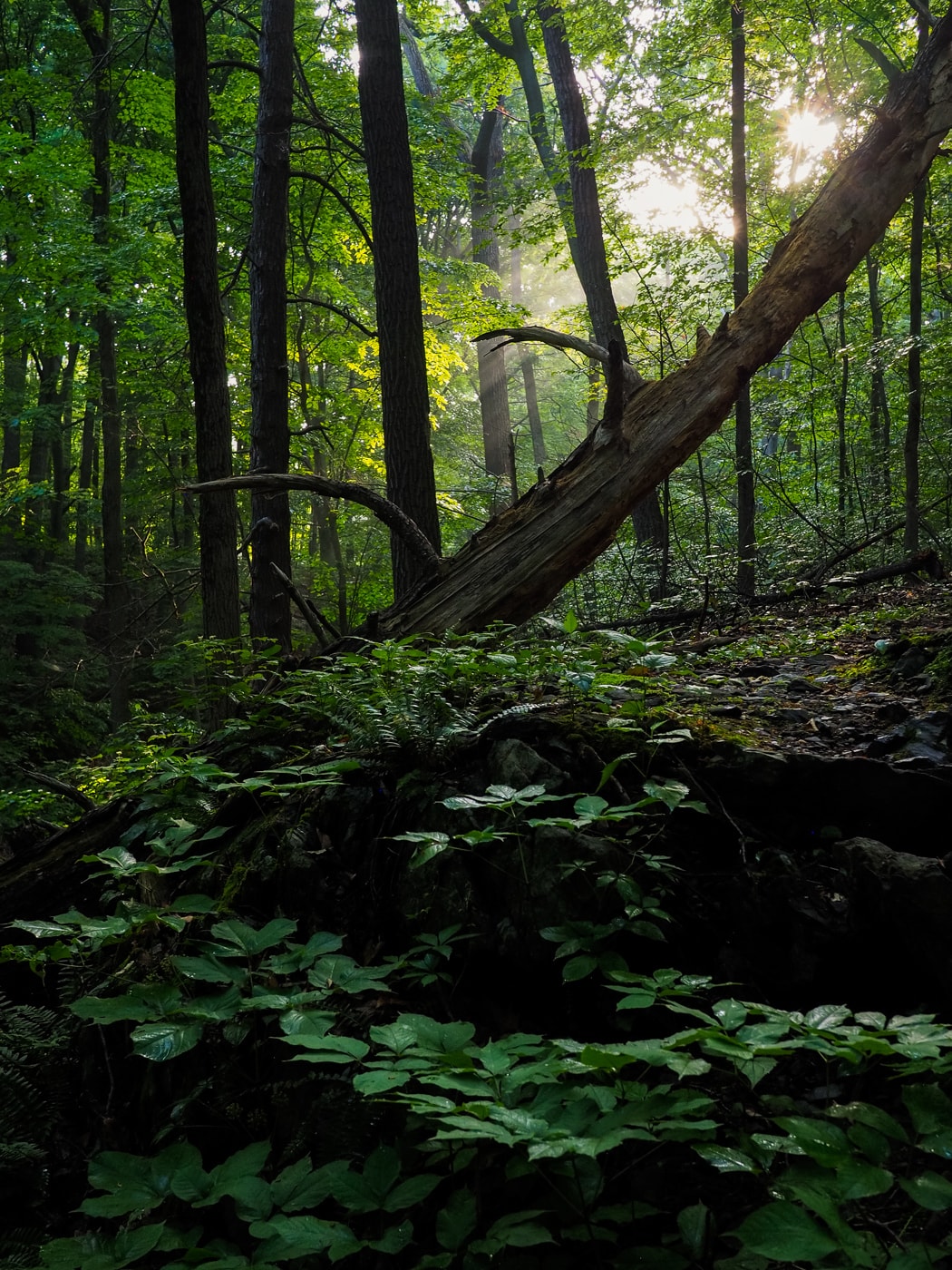
“We’re losing all of our ashes around here in New Paltz and pretty much all of our hemlocks in the village from the adelgid and the emerald ash borer, and I see that all over the place,” Belinsky says. She notes that many bird species are adaptable to the resulting change in forest composition, but others depend on evergreen trees like the hemlock, for instance.
“So, the loss of the hemlocks definitely has an effect on the small number of species who really like deep dark forests and high treetops and high cover, and potentially insects that are associated with them,” Belinsky adds. The plants that replace those dying hemlocks tend to be invasive species or fast-growing species like striped maple that do not provide the same habitat those hemlock dependent species need to survive.
The Hudson Valley is especially vulnerable to the introduction of invasive pests because of its proximity to one the nation’s largest and busiest ports of entry, where plants and materials are brought in from all over the world. According to the Cary Institute, New York has more introduced forest pests than any other state.
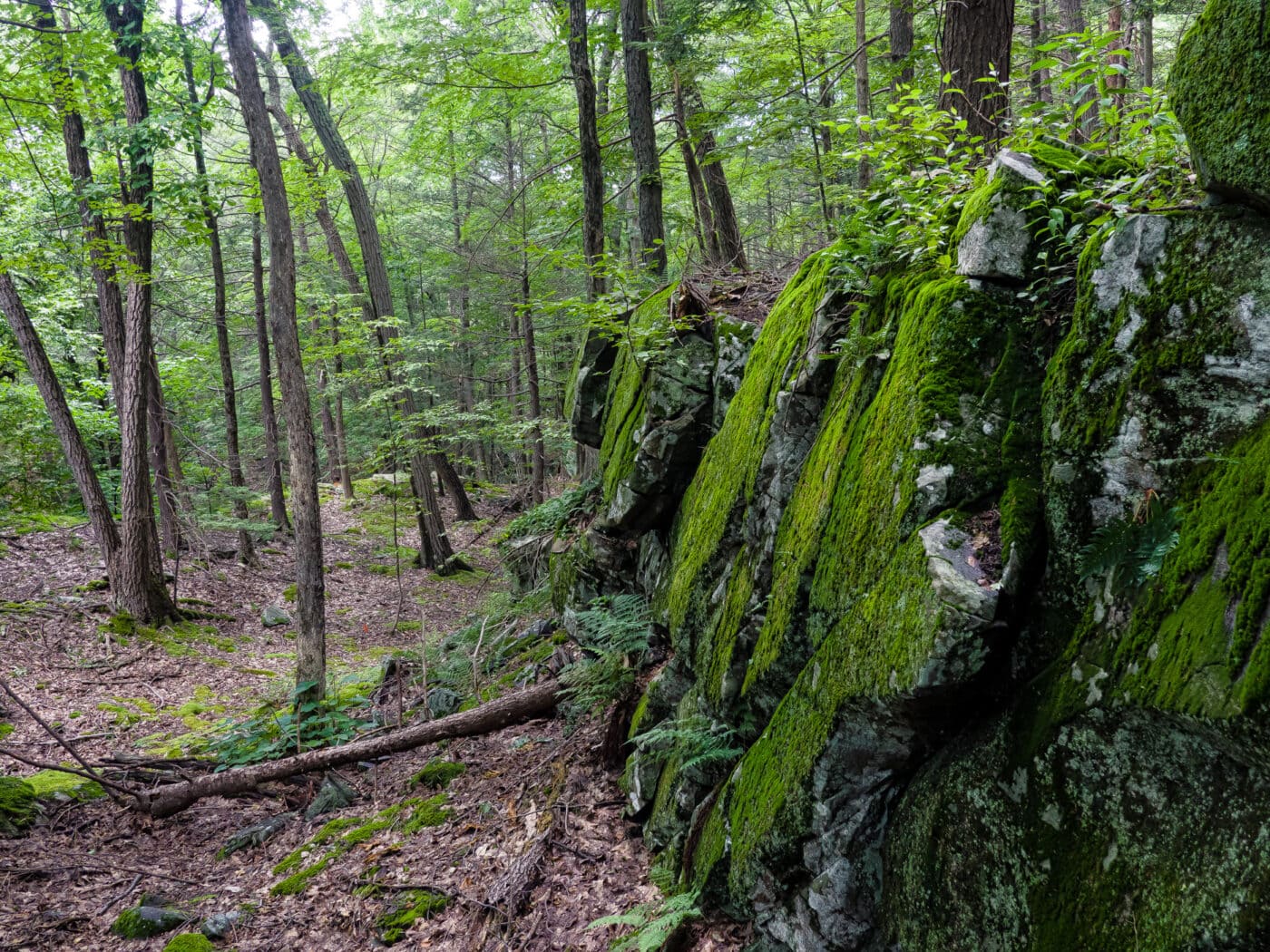
Once established, these pests are like all invasive species — very hard to eradicate. To help prevent invasive insects and new diseases from being imported, the Cary Institute has compiled Tree-SMART Trade policy guidelines and resources. This includes recommendations such as the use of pest-free packaging materials and restrictions on import of non-native plants that are closely related to native species and could carry new pests from afar with a predisposition to thrive here.
But not all forest damage is caused by tiny invasive insects and blights. In the absence of predation by wolves and mountain lions, and in the face of declining hunting by humans, in much of today’s Northeastern ecosystems, deer populations have reached a point of overabundance. This leads to overgrazing of understory vegetation, particularly the native plants, which then favors the regrowth of invasive species. The DEC manages deer population levels mainly through specialized permits for hunting in partnership with landowners, communities, and venison donation programs.
The health of future forests in the Hudson Valley region and beyond depends largely on organized efforts such as these to manage deer and invasive pests, along with the unsung work of many volunteers. “There’s no shortage of people who care about our forests and are willing to pitch in if work needs doing,” Canham says. Such efforts are in the spirit of the state’s heritage of forest conservation, giving hope that tomorrow’s forests will continue to provide the same resources in abundance as they did hundreds of years ago, along with the many recreational experiences we enjoy today.


